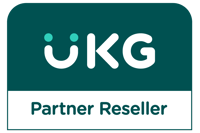Employees have a lot of power these days. Look across industries and you’ll see a common thread — businesses are struggling to secure the workforce they want. While the mass resignations associated with the "Great Resignation" may have subsided in most industries, employee turnover remains a challenge.
Today, we’ll take a look at how the right approach to an exit interview can make all the difference in gaining the insights you need to make noticeable strides toward a happier workforce that’s more likely to stick around.
A successful exit interview starts with the right questions
The perfect exit interview begins with questions that effectively get to the heart of an employee's decision to leave. These questions should be open-ended to ensure employees have room to expand on their unique experiences. With that said, be prepared with follow-up questions to ensure you’re getting the most clear, in-depth responses possible. Brainstorm your list of questions in advance, making sure to hit on inquires like these:
1. What sparked your job hunt?
People start looking for a new job for a host of reasons. The catalyst for the search could be something as simple as wanting to go back to school or explore a new industry. However, motivations could also be more specific to your organization (or rather the shortcomings of your organization). Questions aimed at understanding why an employee started looking for a new job are great to ask, but one answer from one person might not be of great significance. The real value is in the trend. If you get similar responses from multiple people, chances are more people feel the same way, and there might be a foundational issue to explore and fix within your organization.
2. What ultimately led you to leave your current position?
Sometimes, this question can be confused with the first, but they’re distinctly different. Many employees casually explore job opportunities every now and then, but their motivation is largely coming from a place of curiosity. What prompts the employee to take the plunge and actually resign is the real question. Again, pay attention to patterns of similar answers from multiple employees, as this is hugely informative.
3. What are you most excited for at your new job?
A variety of answers might come from this question, but it’s a casual way of gaining valuable insight. The excitement of what’s to come can shed light on what an employee felt was lacking at your company. On the flip side, they could be excited about similarities across the two positions or the experience they’re bringing to the new job. A few additional questions might help clarify any vague answers you receive:
- What were the top factors that motivated you to accept the new position?
- Will you be working in a similar role at your new company?
- What will you miss and not miss about the position you’re leaving?
4. Do you feel our compensation package was competitive?
Salary isn’t the only factor employees consider when thinking about their compensation. An onsite daycare, flexible working conditions, wellness programs, profit sharing, bonuses and stellar healthcare benefits (the list goes on) are also valuable to employees. Don’t be satisfied with a simple “yes” or “no” response on this one. A follow-up question (or three), can prove helpful. Consider questions like:
- Why or why weren’t you happy with the salary and benefits we provided?
- Do you think the salary increases you received were fair? Explain.
- What additional benefits or perks would have been attractive to you?
5. How was your experience with your manager?
Research shows that over 57% of people leave a job because of their boss. That’s quite the percentage, so you might want to spend some time on this topic. Remember, this isn’t about gathering dirt on your current management team. The goal is to unlock opportunities to improve your leadership team. For example, certain responses could prompt the rollout of more professional development opportunities, such as emotional intelligence training, employee conflict resolution, verbal judo classes and more. Again, additional questions can help you gain more well-rounded responses. Give these a try:
- Can you describe your relationship with your manager?
- Do you think you were given adequate support and recognition for your contributions?
- Did leaders within the company make you feel like a valued member of the team?
- What could your manager do to improve? What does your manager do well?
Additionally, it's crucial to establish a clear process for conveying this feedback to managers in a constructive and confidential manner. Ensuring anonymity and emphasizing the importance of honest feedback can help overcome potential barriers to obtaining candid insights. Without a transparent and effective feedback mechanism, departing employees may hesitate to share their true thoughts, hindering your ability to identify areas for improvement and foster a more positive work environment for existing and future employees. In other words, have a feedback process — and make sure the departing employee is aware of it.
6. Did you have all the tools and training needed to succeed in your role?
Achieving career goals and climbing the proverbial ladder is important for many people. Opportunities to attend conferences, undergo training or earn higher education credits can be vital in taking that next career step. If ambitious employees see a glass ceiling or limited pathway to advancement within your organization, they’ll be some of the first folks out the door. Or, if employees aren’t armed with the right tools and technologies, frustration can fester and lead to their departure. Get at the specifics with follow-up questions like these:
- How can we help employees do their jobs more efficiently?
- Do you feel anything was inhibiting you from advancing your career at our company?
- Specifically, what tools and training do you wish you had access to?
7. How would you describe the company culture here?
This is a little bit of a loaded question, but it’s a crucial one. Core values are an integral part of any business model, and a healthy organization works hard to implement strategies that align with those values. An unhealthy organization has a disconnect between the values they present (or vaguely present) and the follow-through (or lack thereof). Working day in and day out, an employee has a unique perspective on the cultural health of your organization. Prepare questions about core values and company culture, such as these:
- Do you believe the company has a clear set of core values? What are they?
- In what areas is the organization’s culture on par with our core values, and where is it misaligned?
- Do you think employee morale is good? How would you boost it?
8. Do you feel your job description and title accurately represented your responsibilities? Why or why not?
Often, disappointment comes from unfulfilled expectations. If an employee has the belief they’ll be working in one capacity, but instead a workload of other tasks are consistently put on their plate — it’ll get old, quickly. The opposite can also be true. If an employee wants more projects or clients, but keeps getting the less desirable or challenging jobs (which can lead to fewer bonuses or advancement), it’s cause for disappointment. Asking the employee to describe their workload and expectation is a good way to gauge if the position was clearly represented.
9. Was there clear and open communication in the workplace?
In today’s world, people work all over (remote, hybrid, in-office), and communication can get a little muddy at times. There are multiple benefits to working from home, but when most of the communication is non-verbal (think: email and chat tools), it can be challenging to pick up on other cues or always communicate effectively.
Communication brings connection. Finding ways to foster relationships and remedy communication issues is a top priority for businesses. Here's what to ask about communication:
- Did you have sufficient tools and opportunities to communicate with your peers and supervisors?
- Do you feel your supervisor provided you with an appropriate amount of information related to company and departmental issues? If not, what could they have done better?
- Were there specific communication methods that worked best, or didn’t work at all?
10. What could we have done to keep you here?
This open-ended question is a tell-tale winner. It leaves space to show you care about the employee’s experience and helps your business learn, grow and retain valuable employees moving forward.
11. Do you have any additional comments or concerns you'd like to mention?
This question doesn’t need too much of an explanation. However, it’s a good way to leave room for departing employees to freely address anything that didn’t come up within the interview.
Think about important interview details
An exit interview involves more than simply questions and answers. Gaining the most value from an exit interview starts with an employee’s sense of safety and comfort. Follow these six helpful tips for the best interview results.
- Create a comfortable environment: Conduct exit interviews in a private and casual setting to encourage candor. Offering a remote interview is another option that can increase an employee’s comfort level (if they’re used to using technology for video calls).
- Keep data confidential: Make it clear to employees that their answers are confidential, and report responses so that specific statements cannot be identified.
- Consider an outsider: If budget permits, consider hiring a third-party interviewer, as employees may be more candid with someone outside of your company.
- Prepare interviewers: Whether you’re using a third-party provider or an HR team member, make sure they’re properly trained to conduct exit interviews.
- Use a “mixed method” approach: Gather quantitative data via surveys, but also ask open-ended questions to gain qualitative insights.
- Don’t ask leading questions: If employees give unclear answers, ask them to clarify. Don’t make assumptions when asking follow-up questions.
Turning lemons into lemonade
Seeing employees leave can be tough, but it’s also an excellent opportunity to improve your organization and unlock the intel needed to retain current employees. Interested in other ways to keep valuable employees on board? We held a roundtable with some of our existing clients. Here are tips and strategies they say are effective at reducing employee turnover.
Editor's Note: This blog was originally posted on November 2, 2021, and has been updated with new content relevant for 2024.










